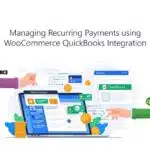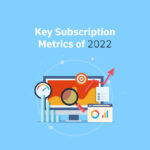
Navigating SaaS Renewal Stages to Ensure Customer Success
Many SaaS businesses follow a subscription based model with subscription life cycles of varying periods. Thus, the success of any Software as a Service (SaaS) businesses greatly depends on customer retention. There are a plethora of studies which can substantiate the claim that it is cheaper to increase profits by effectively retaining customers than by conducting extensive marketing campaigns to attract new ones.
Majority of SaaS businesses operate in very dynamic and saturated markets.Thus, logic dictates that businesses aiming to expand revenues should take an inward approach. They should find opportunities to improve the customer satisfaction of existing customers and retain them.
In order to achieve this goal, businesses need to effectively manage the various SaaS Renewal Stages and ensure smooth services while identifying and improving upon any deficiencies.
Learning About SaaS Renewal
Subscriptions are based around subscription life cycles and they can be of various lengths. Customers pay recurring fees monthly, quarterly or annually and they have the option to continue or stop with a service at the end of a cycle. SaaS Renewal refers to customers choosing to renew their subscription to a SaaS product. The payments can be manual or automated through subscription management softwares.
SaaS businesses should aim to achieve high renewal rates because it has many implications on the product itself. The reason is that higher renewal rates not only signal customer satisfaction but also the quality of the provided services as customers will only renew their subscription if it serves their needs.
Moreover, high renewal rates also open up the opportunities for up-selling and cross-selling. Up-selling refers to selling premium versions of the current service and cross-selling refers to the provision of other complimentary services that are related to the current service. It is a common fact that it is easier to sell premium or ancillary services to existing customers than to new customers.
SaaS Renewal Stages
In order for the effective management of subscription renewal, it is crucial to learn about the various stages of SaaS renewals. SaaS subscription renewal stages are fairly simple and can be broken down into three stages as follows:
- Pre-Renewal: This stage involves preparing for the actual renewal period. Customers are sent out early notifications reminding them of the upcoming payment. This helps avoid any unnecessary churn and engages the customers.
Businesses can also use this time to send customer surveys and gain qualitative data about the customer experience. This will allow businesses to communicate with customers and also see which features are more valued by customers and where there is a room for tweaks.
- Subscription Renewal: In this phase the actual renewal takes place and customers can choose to continue with a given plan, switch to a premium one or end their subscription.
This step can look different for different businesses but usually it involves automated or manual payments, dunning management and proration etc.
- Post-Renewal: Lastly, once the payments go through customers receive a thank you notification expressing gratitude for choosing a particular business. Apart from that, this stage can also be used to gain additional customer feedback to get a sense of the product’s value for the customers.
Measuring SaaS Renewal
In order to monitor SaaS subscription renewals, businesses can use different ratios to get a sense of customer retention. A general rule of thumb is that businesses should aim to retain at least 80% of their customers. Here is a compilation of a few common formulas that are widely used:
- Churn Rate: This metric refers to the amount of customers that turn away from the business. It is calculated as a percentage of (Number of Customers Lost During a Period divided by the Number of Total People at the Start of a Period).
A high churn rate signals customer dissatisfaction with the product thus businesses should aim for a low churn rate.
- Customer Lifetime Value (CLV): This refers to the average overall value a SaaS business generates out of a single customer throughout all of their subscription lifecycle. It is calculated as a percentage of (Average Revenue per User (ARPU) divided by the Churn Rate).
Effective SaaS Renewal Management can help maximize the CLV of a business
- Renewal Rate: It measures the percentage of users that choose to renew their subscription during a lifecycle. It is calculated as a percentage of (Number of Actual Renewals divided by Number of Users Up for Renewal).
Higher Renewal Rates are favorable for businesses.
- Retention Rates: This metric is very similar to renewal rate but it is calculated at a much broader period. It calculates customer retention over a period regardless of them renewing their subscription for all cycles. Retention Rate can be obtained by subtracting the churn rate from 1.
These ratios cannot tell everything or provide a roadmap in case of low customer retention. Nevertheless, they are quite helpful in getting a sense of whether customers generate value out of a given product.
SaaS Renewal Strategies
Due to the highly competitive nature of the SaaS business landscapes, it becomes imperative to stay ahead of the curve. Businesses should optimize and strategize to ensure that they are able to retain their customer base and avoid churning. Here are a few measures business can take to stay competitive:
- Engaging Customers: It is very important to allow the customers to see the value of the product. If customers do not see the value that a Saas product can add to then they are likely to cancel their subscription, or worse, switch to a competitor.
Thus, businesses should try to engage with customers. They can do so by sharing success stories of other mature customers that benefited from the service. Moreover, businesses should proactively engage with customers by sending regular updates about new innovations or other such changes.
- Analyzing Customer Data: Customer data can be a valuable aid for businesses because it helps gain key insights into customer preferences. It can also help identify customer dissatisfaction beforehand so businesses can mitigate it.
If customers are logging in less or using less volume or features of the service then it points to the fact that it does not generate value for them. After proper identification businesses can take steps to retain the dissatisfied customers.
- Incentivizing Customers: If customers lose interest in a service then businesses can take a few steps to gain their attention back. This can be done by providing discounts on new subscriptions or tweaking up the plan to ensure that it suits the needs of the customers better.
Alternatively, mature customers can also be incentivized to stay loyal by offering loyalty programs depending on the length of their overall subscription period.
- Looking out for Unintentional Churn: Not all users shift away due to dissatisfaction. Glitches and other technical faults can be a major contributing factor as well. Credit card expiration is a huge reason for such churn. If a customer’s card declined then their payment won’t go through at the specified time. As a result, the customer will be dropped from the subscription cycle.
This can be prevented by automating payment procedures which provide dunning management. Billing softwares can do effective dunning management by sending notifications if a card is about to expire and by sending alternative payment paths.
Conclusion
The above discussion stresses on the importance of effective management of the various SaaS renewal stages. If the management is unable to handle everything in a way that makes for a smooth ride for the customers then it can put the business in deep waters. Thus, it is always a good idea to keep innovating and strategizing to create value for the customers which will then result in loyalty and customer retention.










